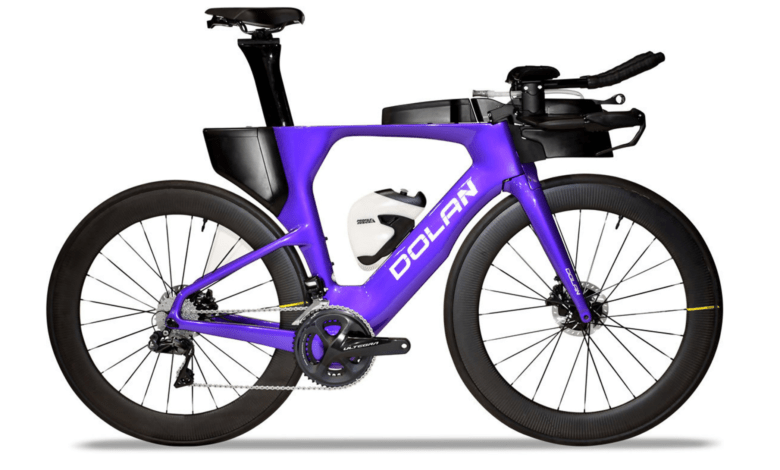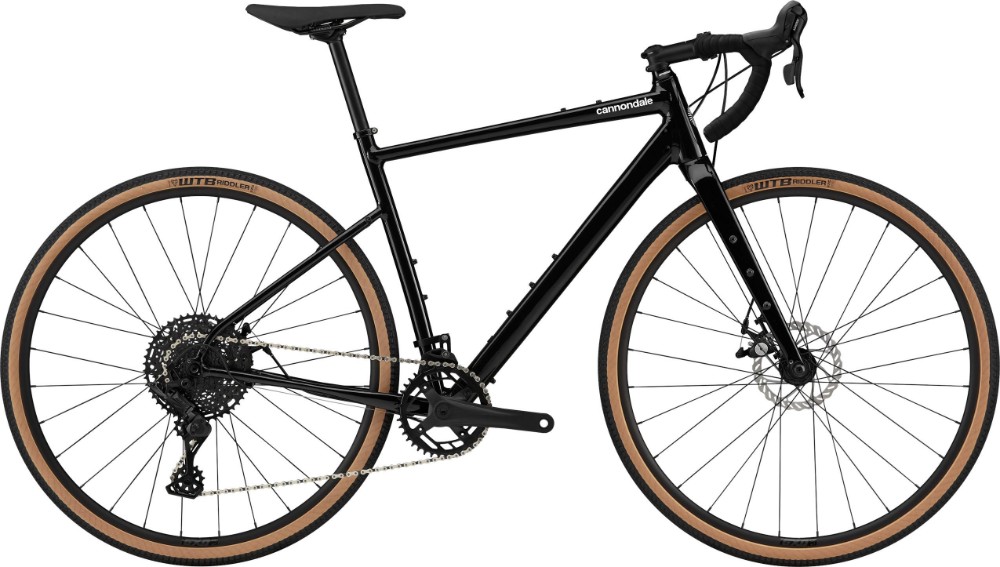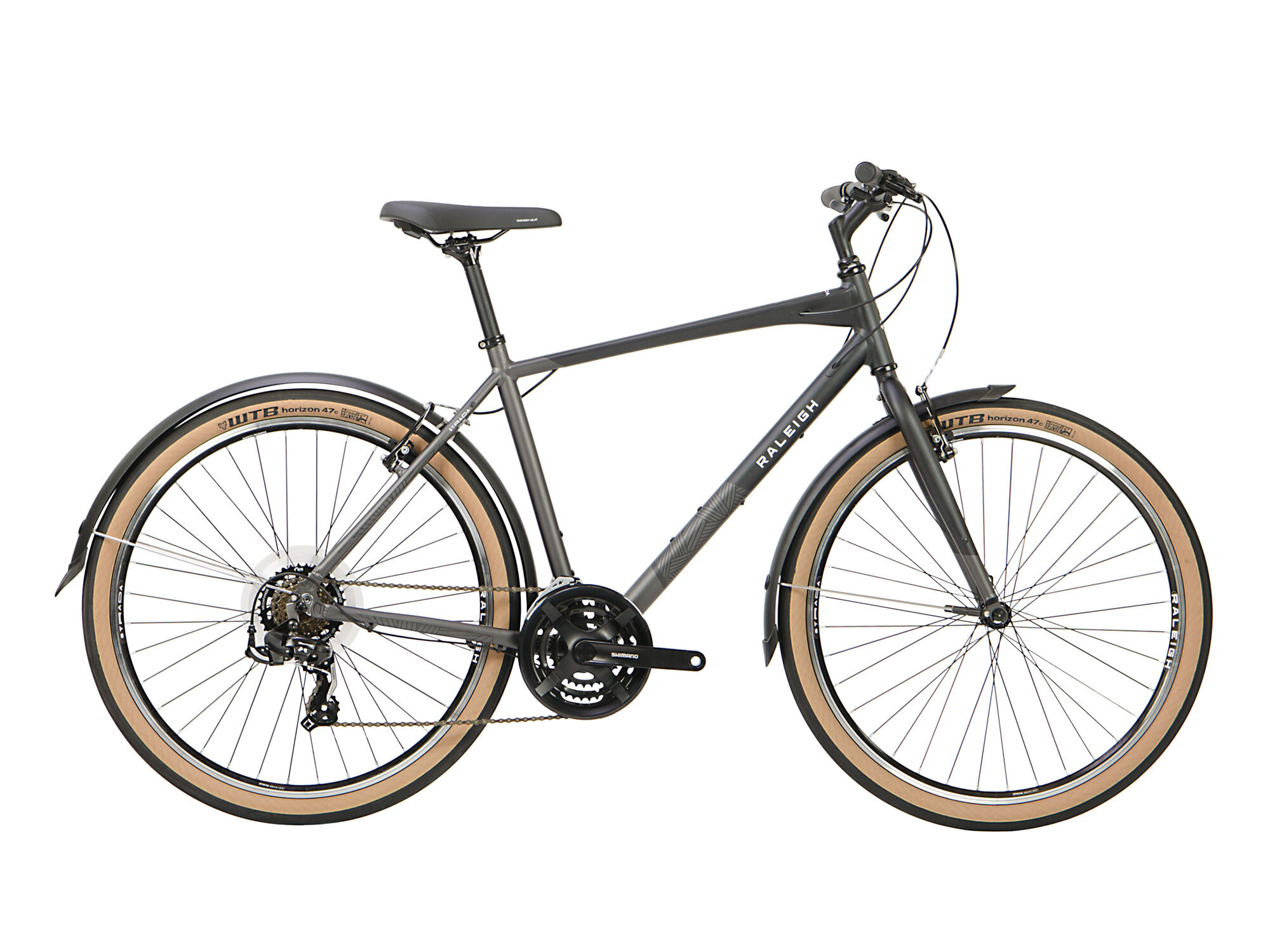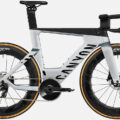Discussing the Different Types of Triathlon Bikes Available

When it comes to competing in a triathlon, choosing the right bike can make a significant difference in your performance. With a variety of triathlon bikes available on the market, each designed to cater to different needs and preferences, it’s essential to understand the options before making a decision. In this blog post, we will delve into the world of triathlon bikes, exploring the various types such as aerodynamic bikes, road bikes, time trial bikes, and even unconventional options like gravel, mountain, and hybrid bikes. By understanding the characteristics, advantages, and limitations of each type, you’ll be equipped to make an informed choice that suits your triathlon goals. Let’s pedal through the details and find the perfect bike for your next race!
Introduction: Understanding the Importance of Choosing the Right Triathlon Bike

Choosing the right triathlon bike is of utmost importance for any triathlete, whether you’re a beginner or a seasoned competitor. The bike you ride can significantly impact your speed, efficiency, and overall performance during the race.
A triathlon bike is specifically designed for the unique demands of triathlon events, where participants must swim, bike, and run consecutively. Unlike regular road bikes, triathlon bikes are engineered to optimize aerodynamics and provide maximum efficiency, allowing athletes to conserve energy and maintain higher speeds.
By selecting the right triathlon bike, you can gain a competitive edge and enhance your overall race experience. Factors such as frame geometry, bike weight, components, and even bike fit play a crucial role in determining the right bike for your specific needs.
In the following sections, we will explore the different types of triathlon bikes available in detail, discussing their advantages, disadvantages, and suitability for various race conditions. Whether you’re aiming for a podium finish or simply striving to improve your personal best, understanding the various types of triathlon bikes will help you make an informed decision and optimize your performance on race day. So, let’s dive into the world of triathlon bikes and uncover the options that await you!
Aerodynamic Bikes: The Pros and Cons
Aerodynamic bikes, also known as aero bikes, have gained immense popularity among triathletes due to their focus on reducing wind resistance and maximizing speed. These bikes are specifically designed to slice through the air with minimal drag, allowing athletes to maintain higher speeds with less effort. In this section, we will explore the characteristics, benefits, and potential drawbacks of aerodynamic bikes.
What Makes an Aero Bike?

Aerodynamic bikes are characterized by their sleek and streamlined design. They feature unique frame shapes, integrated components, and advanced technologies that minimize wind resistance. These bikes typically have aero-shaped tubes, deep-section carbon wheels, and integrated handlebars. The frame geometry is optimized to place the rider in a more forward and aggressive position, reducing frontal area and improving aerodynamics.
Benefits of Using Aero Bikes
- Improved Speed: The primary advantage of aerodynamic bikes is their ability to cut through the air more efficiently, allowing riders to maintain higher speeds with less effort. This can lead to faster bike splits and overall improved race times.
- Energy Conservation: By reducing wind resistance, aerodynamic bikes enable athletes to conserve energy during the bike leg of a triathlon. This can translate into having more energy reserves for the subsequent run leg, leading to better overall performance.
- Stability: Aero bikes are designed to provide excellent stability, particularly when riding at high speeds. The streamlined frame and geometry contribute to enhanced handling and control, allowing athletes to feel confident and in control even in challenging race conditions.
- Integrated Components: Many aero bikes come with integrated components, such as handlebars, stems, and brakes. This integration not only improves aerodynamics but also enhances the overall aesthetics and functionality of the bike.
Potential Drawbacks of Aero Bikes
- Limited Versatility: The aggressive geometry and specialized design of aerodynamic bikes make them less suitable for everyday riding or non-drafting triathlons. These bikes are optimized for straight-line speed and may not offer the same level of comfort or versatility as other types of triathlon bikes.
- Cost: Aerodynamic bikes tend to be more expensive compared to other types of triathlon bikes. The advanced technologies, carbon fibre components, and integrated design contribute to higher price tags. However, it’s important to consider the value and performance benefits they offer when making a purchasing decision.
- Handling in Crosswinds: The deep-section carbon wheels and aggressive frame geometry of aero bikes can make them more susceptible to crosswinds. Riders may experience some instability or difficulty in maintaining control during gusty conditions. However, advancements in bike technology have led to improved stability in newer models.
As with any type of bike, it’s essential to consider your individual needs, race goals, and personal preferences when deciding whether an aerodynamic bike is right for you. While they excel in speed and efficiency, it’s important to weigh the potential drawbacks and ensure that the bike aligns with your racing style and the specific conditions you will encounter. Let’s now move on to exploring another popular type of triathlon bike: road bikes.
Road Bikes: An Overview
Road bikes are a popular choice among triathletes due to their versatility, comfort, and suitability for various race conditions. In this section, we will provide an overview of road bikes, discussing their characteristics, advantages, and limitations.
Defining the Characteristics of a Road Bike
Road bikes are designed for efficient and comfortable riding on paved roads. They feature lightweight frames made from materials such as carbon fibre, aluminium, or steel. The frame geometry of a road bike is generally more relaxed compared to aerodynamic bikes, placing the rider in a more upright position for enhanced comfort during long rides. These bikes typically have drop handlebars, narrow tyres, and multiple gears for smooth and efficient pedalling.
Advantages of Choosing a Road Bike

- Versatility: Road bikes excel in various terrains and conditions, making them suitable not only for triathlons but also for recreational riding, group rides, and even commuting. Their lightweight and responsive nature allows for agile handling and easy manoeuvrability.
- Comfort: The more upright riding position and the use of vibration-dampening materials in road bike frames contribute to a smoother and more comfortable ride, especially during long-distance events.
- Cost: Road bikes tend to be more affordable compared to aerodynamic or time-trial bikes. With a wide range of options available, you can find a road bike that fits your budget without compromising on quality and performance.
Limitations of Road Bikes
- Aerodynamics: While road bikes offer a comfortable riding position, they are not as aerodynamically optimized as aero or time trial bikes. This can result in slightly slower speeds compared to more streamlined options, especially in races where aerodynamics plays a significant role.
- Efficiency: Road bikes may not provide the same level of efficiency and power transfer as specialized triathlon bikes. The more relaxed geometry and wider tyres can lead to slightly lower speeds and increased energy expenditure over longer distances.
- Limited Adjustability: Road bikes may have limited adjustability options compared to triathlon-specific bikes. This can impact bike fit and comfort for athletes with specific body proportions or flexibility requirements.
Road bikes are an excellent choice for triathletes who value versatility and comfort. They offer a balance between speed, endurance, and agility, making them suitable for various race distances and training rides. However, if your primary focus is on maximizing aerodynamics or achieving the highest level of efficiency, you may want to consider other types of triathlon bikes. Next, let’s explore the world of time trial bikes and their unique features.
Time Trial Bikes: What You Need to Know

Time trial bikes, also known as TT bikes or triathlon bikes, are specifically designed for the demands of time trial events and triathlons. In this section, we will delve into the features, advantages, and considerations of time trial bikes.
Understanding the Time Trial Bike Design
Time trial bikes are built for maximum aerodynamic efficiency and speed. These bikes feature a unique frame design with elongated tubes, aero-shaped profiles, and integrated components. The geometry of a time trial bike is characterized by a steeper seat tube angle, which positions the rider more forward and lower, reducing frontal area and optimizing aerodynamics. Time trial bikes often have integrated handlebars, internal cable routing, and deep-section wheels to further enhance their aerodynamic performance.
Why Choose a Time Trial Bike?
- Aerodynamics: Time trial bikes are specifically engineered to minimize wind resistance and maximize speed. The streamlined frame design, aero-shaped tubes, and integrated components contribute to superior aerodynamics, allowing riders to achieve higher speeds with less effort.
- Speed and Efficiency: The optimized aerodynamics of time trial bikes result in improved speed and efficiency. Triathlon events often involve long, straight stretches where maintaining a consistent high speed is crucial. Time trial bikes excel in providing the necessary power transfer and efficiency to achieve fast bike splits.
- Integrated Components: Time trial bikes often come with integrated handlebars, stems, and brakes. This integration not only improves aerodynamics but also provides a clean, streamlined aesthetic and enhanced functionality.
Considerations When Using Time Trial Bikes
- Fit and Comfort: The aggressive geometry of time trial bikes, with a forward and lower riding position, may not be suitable for everyone. It’s crucial to ensure that your bike is properly fitted to optimize comfort and reduce the risk of injury. A professional bike fit can help you find the right balance between aerodynamics and comfort.
- Handling: Time trial bikes can feel different and require some adjustment compared to traditional road bikes. The steep seat tube angle and forward positioning may affect handling, especially during technical sections or tight turns. It’s important to practice and become familiar with the bike’s handling characteristics.
- Limited Versatility: Time trial bikes are designed specifically for time trial events and triathlons. They may not be as versatile for everyday riding or non-drafting races. If you plan on using your bike for other purposes, such as group rides or commuting, you may want to consider a road bike or a more versatile triathlon bike option.
Time trial bikes offer triathletes the advantage of exceptional aerodynamics and speed. If your goal is to achieve the fastest bike split and optimize your performance in triathlon events, a time trial bike should be strongly considered. However, it’s important to ensure proper fit and practice handling to maximize the benefits of this specialized bike. Now, let’s explore some other types of triathlon bikes that may suit specific race conditions or personal preferences.
Other Types of Triathlon Bikes
In addition to aerodynamic bikes, road bikes, and time trial bikes, other types of triathlon bikes cater to specific race conditions or personal preferences. In this section, we will explore some of these alternative options.
Gravel Bikes
 Gravel bikes, also known as adventure bikes, are designed for off-road terrain and mixed surfaces. These bikes feature wider tyres for increased traction, disc brakes for better-stopping power, and a more relaxed geometry for enhanced comfort during longer rides. While not specifically built for triathlons, gravel bikes can be a suitable choice for races that involve rough roads or even some off-road sections.
Gravel bikes, also known as adventure bikes, are designed for off-road terrain and mixed surfaces. These bikes feature wider tyres for increased traction, disc brakes for better-stopping power, and a more relaxed geometry for enhanced comfort during longer rides. While not specifically built for triathlons, gravel bikes can be a suitable choice for races that involve rough roads or even some off-road sections.
Mountain Bikes
 For triathlons that include off-road sections or significant elevation changes, mountain bikes can be a viable option. Mountain bikes are designed with suspension systems to absorb shocks and bumps, wider and knobbier tyres for better traction on trails, and a more upright riding position for improved control. However, it’s important to note that mountain bikes may not provide the same level of efficiency and speed on paved roads compared to other types of triathlon bikes.
For triathlons that include off-road sections or significant elevation changes, mountain bikes can be a viable option. Mountain bikes are designed with suspension systems to absorb shocks and bumps, wider and knobbier tyres for better traction on trails, and a more upright riding position for improved control. However, it’s important to note that mountain bikes may not provide the same level of efficiency and speed on paved roads compared to other types of triathlon bikes.
Hybrid Bikes
 Hybrid bikes combine features of road bikes and mountain bikes to offer a versatile and comfortable riding experience. These bikes typically have a more upright riding position, wider tyres for stability, and a lightweight frame for efficient pedalling. Hybrid bikes are suitable for triathletes who prioritize comfort and versatility over pure speed and aerodynamics. They are ideal for shorter or non-competitive triathlons, as well as for recreational rides or commuting.
Hybrid bikes combine features of road bikes and mountain bikes to offer a versatile and comfortable riding experience. These bikes typically have a more upright riding position, wider tyres for stability, and a lightweight frame for efficient pedalling. Hybrid bikes are suitable for triathletes who prioritize comfort and versatility over pure speed and aerodynamics. They are ideal for shorter or non-competitive triathlons, as well as for recreational rides or commuting.
It’s important to consider the specific race conditions, terrain, and personal preferences when choosing an alternative triathlon bike. While they may not provide the same level of speed or aerodynamics as specialized triathlon bikes, these alternatives can offer greater versatility and adaptability to various riding conditions. Make sure to test and familiarize yourself with the bike before race day to ensure optimal performance.
Now that we have explored various types of triathlon bikes, let’s move on to the conclusion, where we will summarize the key considerations and help you make an informed decision when choosing the right bike for your triathlon needs.
Conclusion: Choosing the Right Bike for Your Triathlon Needs
Choosing the right bike for your triathlon needs is a crucial decision that can greatly impact your performance and overall race experience. In this blog post, we have discussed the different types of triathlon bikes available, including aerodynamic bikes, road bikes, and time trial bikes, as well as alternative options like gravel bikes, mountain bikes, and hybrid bikes.
Aerodynamic bikes excel in speed and efficiency, with their streamlined design and optimized aerodynamics. They are ideal for triathletes focused on achieving maximum speed and performance in flat, non-technical race courses.
Road bikes offer versatility and comfort, making them suitable for various terrains and race distances. They strike a balance between speed, endurance, and agility, making them a popular choice for triathletes seeking a versatile bike that can also be used for other purposes such as recreational rides or commuting.
Time trial bikes are specifically designed for time trial events and triathlons. With their aerodynamic frame design and integrated components, they maximize speed and efficiency. Time trial bikes are ideal for triathletes aiming for the fastest bike splits and optimal aerodynamics during the race.
Additionally, alternative options like gravel bikes, mountain bikes, and hybrid bikes cater to specific race conditions or personal preferences. Gravel bikes are suitable for off-road or mixed-surface races, while mountain bikes are ideal for races with off-road sections or significant elevation changes. Hybrid bikes offer versatility and comfort, making them a good choice for shorter or non-competitive triathlons, as well as recreational rides or commuting.
When choosing the right bike for your triathlon needs, it’s important to consider factors such as race conditions, personal preferences, budget, and individual fit requirements. Proper bike fit and comfort are essential to ensure optimal performance and reduce the risk of injury. Consulting with a professional bike fitter can help you find the right bike size and adjust the bike’s components to suit your body proportions and riding style.
Ultimately, the right triathlon bike for you will depend on your specific goals, race conditions, and personal preferences. Consider the advantages, limitations, and suitability of each type of bike discussed in this blog post. Take the time to test ride different options and seek advice from experienced triathletes or bike experts. By making an informed decision, you can choose the bike that will help you maximize your performance and enjoyment during your triathlon journey. Good luck and happy racing!











